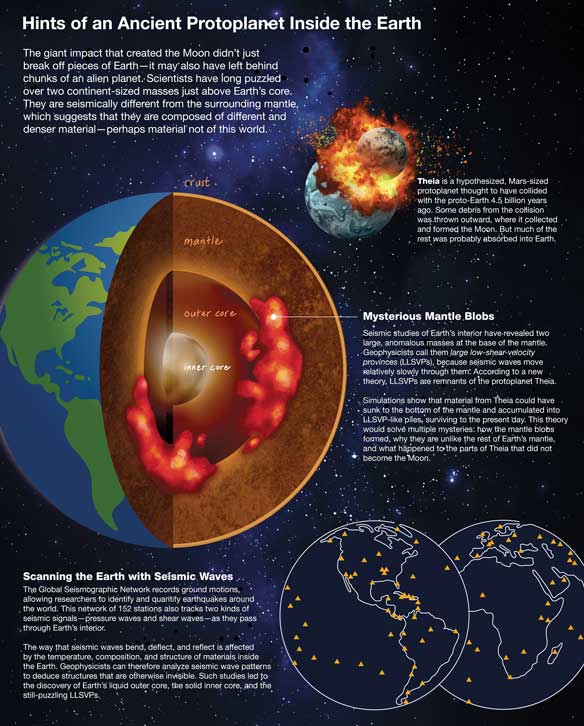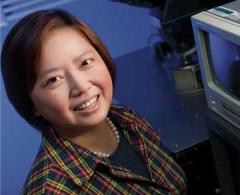
This Article From Issue
November-December 2024
Volume 112, Number 6
Page 328
The giant impact that created the Moon didn’t just break off pieces of Earth—it may also have left behind chunks of an alien planet. Scientists have long puzzled over two continent-sized masses just above Earth’s core. They are seismically different from the surrounding mantle, which suggests that they are composed of different and denser material—perhaps material not of this world.
Theia is a hypothesized, Mars-sized protoplanet thought to have collided with the proto-Earth 4.5 billion years ago. Some debris from the collision was thrown outward, where it collected and formed the Moon. But much of the rest was probably absorbed into Earth.

Gary Schroeder
Mysterious Mantle Blobs
Seismic studies of Earth’s interior have revealed two large, anomalous masses at the base of the mantle. Geophysicists call them large low-shear-velocity provinces (LLSVPs), because seismic waves move relatively slowly through them. According to a new theory, LLSVPs are remnants of the protoplanet Theia.
Simulations show that material from Theia could have sunk to the bottom of the mantle and accumulated into LLSVP-like piles, surviving to the present day. This theory would solve multiple mysteries: how the mantle blobs formed, why they are unlike the rest of Earth’s mantle, and what happened to the parts of Theia that did not become the Moon.
Scanning the Earth with Seismic Waves
The Global Seismographic Network records ground motions, allowing researchers to identify and quantify earthquakes around the world. This network of 152 stations also tracks two kinds of seismic signals—pressure waves and shear waves—as they pass through Earth’s interior.
The way that seismic waves bend, deflect, and reflect is affected by the temperature, composition, and structure of materials inside the Earth. Geophysicists can therefore analyze seismic wave patterns to deduce structures that are otherwise invisible. Such studies led to the discovery of Earth’s liquid outer core, the solid inner core, and the still-puzzling LLSVPs.

American Scientist Comments and Discussion
To discuss our articles or comment on them, please share them and tag American Scientist on social media platforms. Here are links to our profiles on Twitter, Facebook, and LinkedIn.
If we re-share your post, we will moderate comments/discussion following our comments policy.